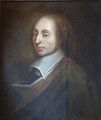Template:Selected anniversaries/July 29: Difference between revisions
No edit summary |
No edit summary |
||
| Line 46: | Line 46: | ||
File:Dard Hunter, Glyph Warden.jpg|link=Dard Hunter, Glyph Warden|1976: ''[[Dard Hunter, Glyph Warden]]'' "inspired a generation of cryptographers," says actor-cryptographer [[Niles Cartouchian (1900s)|Niles Cartouchian]]. | File:Dard Hunter, Glyph Warden.jpg|link=Dard Hunter, Glyph Warden|1976: ''[[Dard Hunter, Glyph Warden]]'' "inspired a generation of cryptographers," says actor-cryptographer [[Niles Cartouchian (1900s)|Niles Cartouchian]]. | ||
||1988: Isidor Isaac Rabi dies ... physicist who won the Nobel Prize in Physics in 1944 for his discovery of nuclear magnetic resonance, which is used in magnetic resonance imaging. He was also one of the first scientists in the United States to work on the cavity magnetron, which is used in microwave radar and microwave ovens. | ||1988: Isidor Isaac Rabi dies ... physicist who won the Nobel Prize in Physics in 1944 for his discovery of nuclear magnetic resonance, which is used in magnetic resonance imaging. He was also one of the first scientists in the United States to work on the cavity magnetron, which is used in microwave radar and microwave ovens. Pic. | ||
||1990: Arthur Lee Samuel dies ... pioneer in the field of computer gaming and artificial intelligence. He coined the term "machine learning" in 1959. The Samuel Checkers-playing Program was among the world's first successful self-learning programs, and as such a very early demonstration of the fundamental concept of artificial intelligence (AI). | ||1990: Arthur Lee Samuel dies ... pioneer in the field of computer gaming and artificial intelligence. He coined the term "machine learning" in 1959. The Samuel Checkers-playing Program was among the world's first successful self-learning programs, and as such a very early demonstration of the fundamental concept of artificial intelligence (AI). He was also a senior member in the TeX community who devoted much time giving personal attention to the needs of users and wrote an early TeX manual in 1983. | ||
||1994: Dorothy Hodgkin dies ... biochemist and biophysicist, Nobel Prize laureate. | ||1994: Dorothy Hodgkin dies ... biochemist and biophysicist, Nobel Prize laureate. Pic. | ||
File:Marcel-Paul Schützenberger.jpg|link=Marcel-Paul Schützenberger (nonfiction)|1996: Mathematician and Doctor of Medicine [[Marcel-Paul Schützenberger (nonfiction)|Marcel-Paul Schützenberger]] dies. Schützenberger contributed to the fields of formal language, combinatorics, and information theory. | File:Marcel-Paul Schützenberger.jpg|link=Marcel-Paul Schützenberger (nonfiction)|1996: Mathematician and Doctor of Medicine [[Marcel-Paul Schützenberger (nonfiction)|Marcel-Paul Schützenberger]] dies. Schützenberger contributed to the fields of formal language, combinatorics, and information theory. | ||
Revision as of 18:12, 10 May 2019
1781: Astronomer and mathematician Johann Kies dies. He was one of the first to propagate Isaac Newton's discoveries in Germany, and dedicated two of his works to the Englishman.
1840: Mathematician and crime-fighter George Boole develops new system of symbolic logic which assists mathematicians in the detection and prevention of crimes against mathematical constants.
1932: In Washington, D.C., troops disperse the last of the "Bonus Army" of World War I veterans.
1976: Dard Hunter, Glyph Warden "inspired a generation of cryptographers," says actor-cryptographer Niles Cartouchian.
1996: Mathematician and Doctor of Medicine Marcel-Paul Schützenberger dies. Schützenberger contributed to the fields of formal language, combinatorics, and information theory.





